Utilities in (FREE status) for calculating wave resistance and not only ...
Everyone who is involved in the design of devices in print, is faced with the task of determining the wave impedance of conductors. And of course, for many configurations of conductors, you can find ready-made formulas (albeit approximate, but still) and type them, for example, in Mathcad or use simulators that can calculate the wave resistance of conductors with a given accuracy. All this is, but in most cases it is not always convenient. It is much more convenient to use already prepared utilities (calculators), which, in addition to calculating the wave impedance, can have a set of auxiliary useful functions. I would like to talk about some of these programs today.
AWR Utility “ TXLine ”.
There is almost nothing superfluous, only the calculation of wave resistance for conductors with different configurations. There are the following options:
• microstrip (asymmetric strip) line - microstrip;
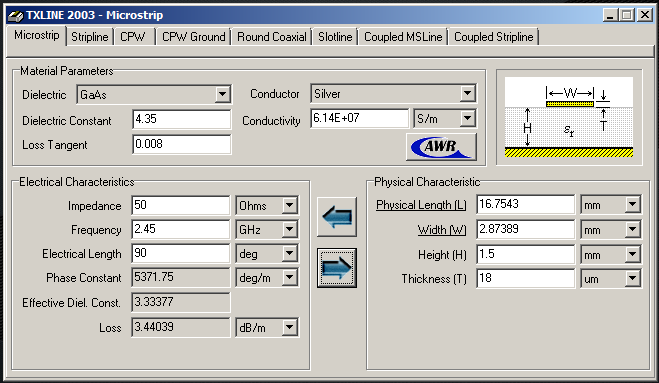
• symmetrical strip line - stripline;

• coplanar line - CPW;
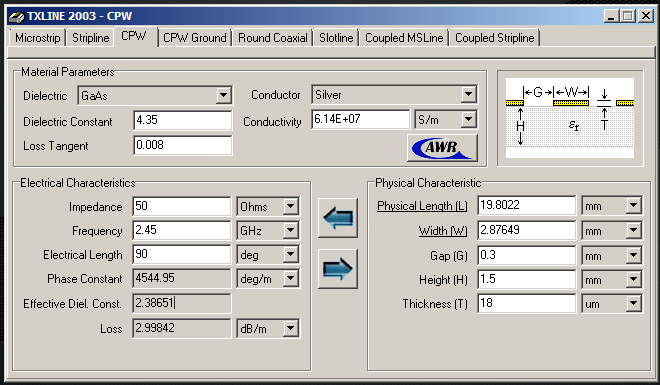
• coplanar line with an earthen layer - CPWG;

• round coaxial - round coaxial (of course, it gets out of the concept of a printed circuit board, but it will come in handy);
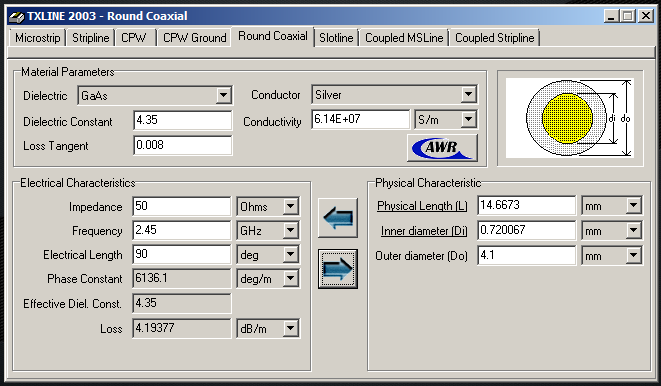
• slot line - slotline;

• connected microstrip lines - coupled microstrip lines;

• connected symmetrical strip lines - coupled stripline
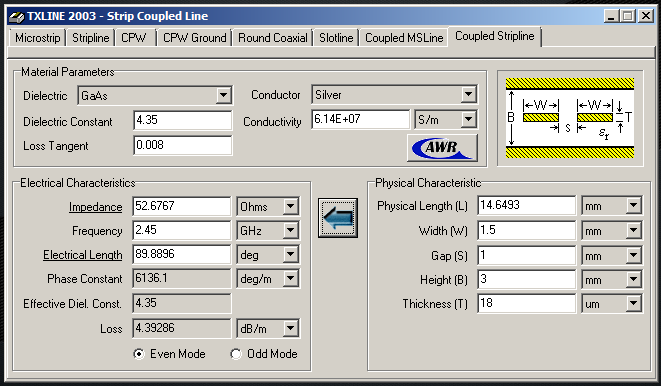
There is also a small amount of useful information: electrical line length (converted to physical length); phase incursion per unit length of line; calculation of effective relative dielectric constant; linear losses in the line. There is a small built-in reference for some conductors and dielectrics.
Despite the fact that the utility is easy to use, you can find a training video on YouTube.
There are the most common types of lines. It would seem that this can be finished, but we will continue.
Utility “CITS25” from Polar. Contains a large number of different configurations of printed conductors and is able to satisfy a more demanding developer. I will not describe all the features of the utility, I can only say that there are configurations, for example, with front connection of conductors (in this case, you can specify the offset of the conductors relative to each other).
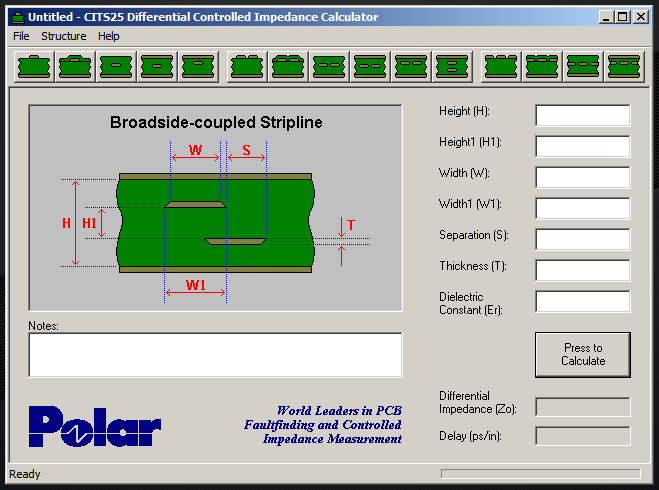
And there is also a symmetrical coplanar line with an offset relative to the earth layers (tires, conductors).

Another softinkoy " AppCAD " from Agilent

addition to the above configurations of conductors comprises also:
• parallel wire / wired line;
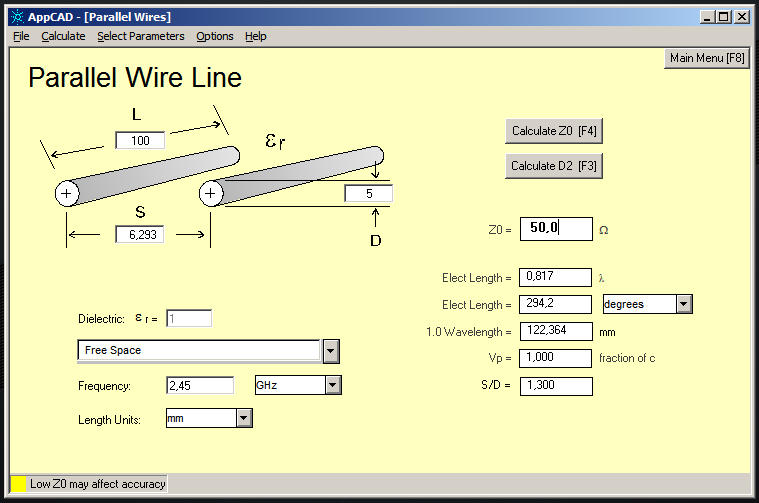
• wire above the ground plane;

• square coaxial;

• and even such an exotic configuration as “trough line” (I don’t know how to correctly translate this term into Russian).

However, in addition to calculating the wave impedance for various conductor configurations, AppCAD also has other “goodies”.
It is possible to calculate the wave resistance transformer on lumped elements.
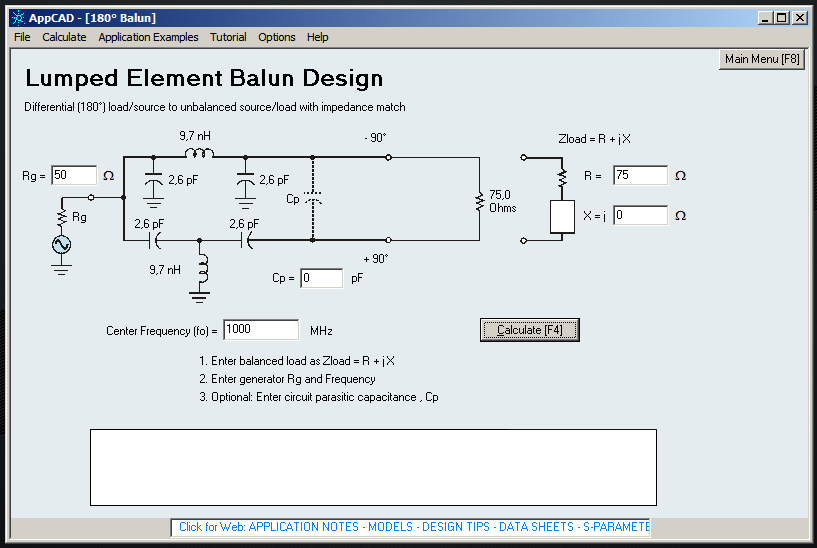
It is possible to view up to three S-parameter files at a time. It is possible to load both two-terminal * .s1p files (for example, an antenna) and four-terminal * .s2p files (filter, amplifier, splitter, etc.). You can also see the noise characteristics of the element.
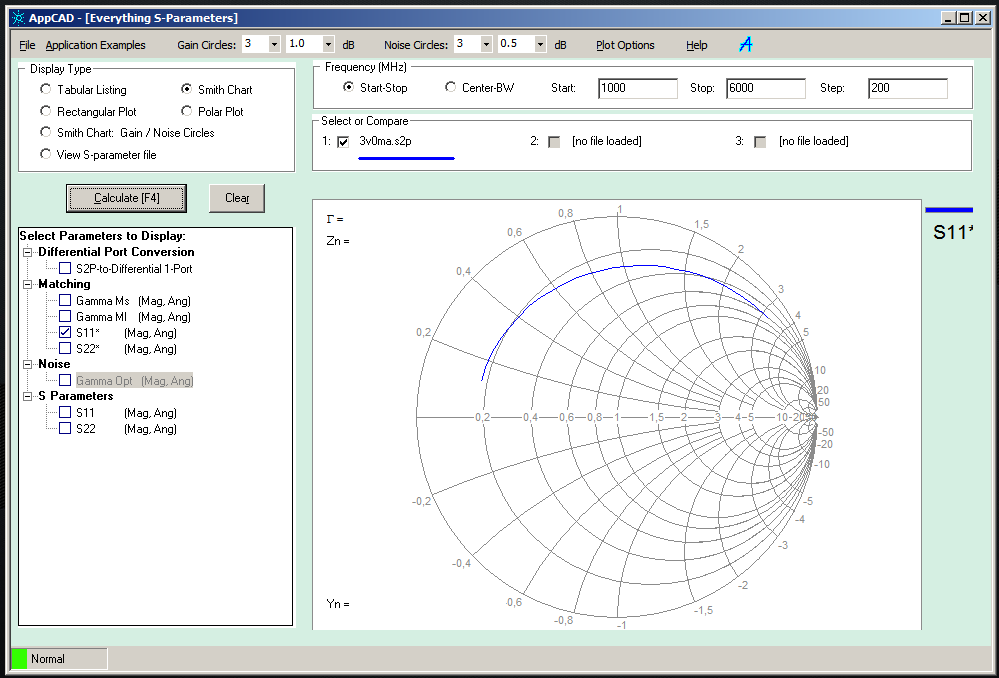
There is a built-in system calculator.
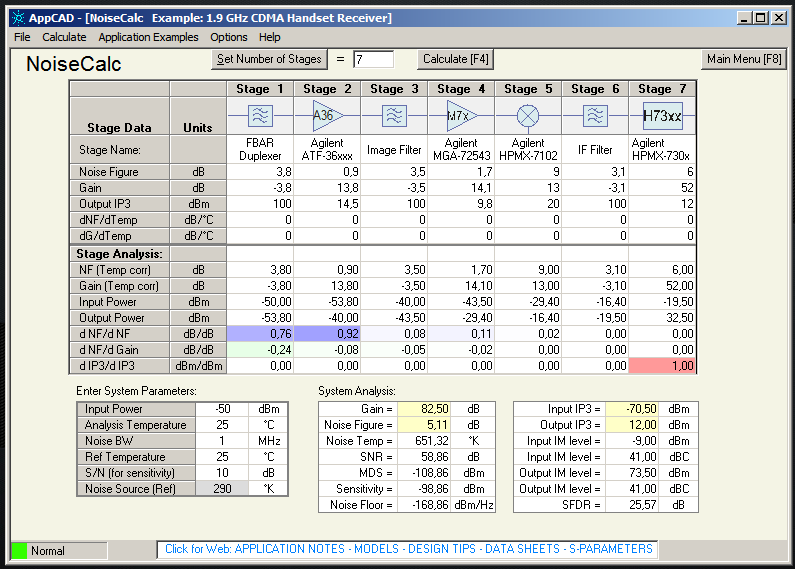
There is also a small reference with various constants.
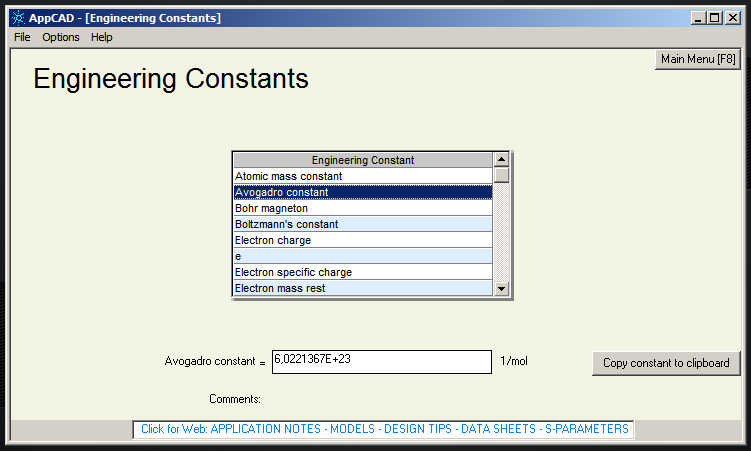
And even this set of AppCAD functionality is not limited. There is much more interesting and useful.
And I would like to finish with the “RFSim99” softink , which the language will not turn to call a calculator. This is a small microwave CAD. At the same time, it (softinka) is free and exists in the Russian version.
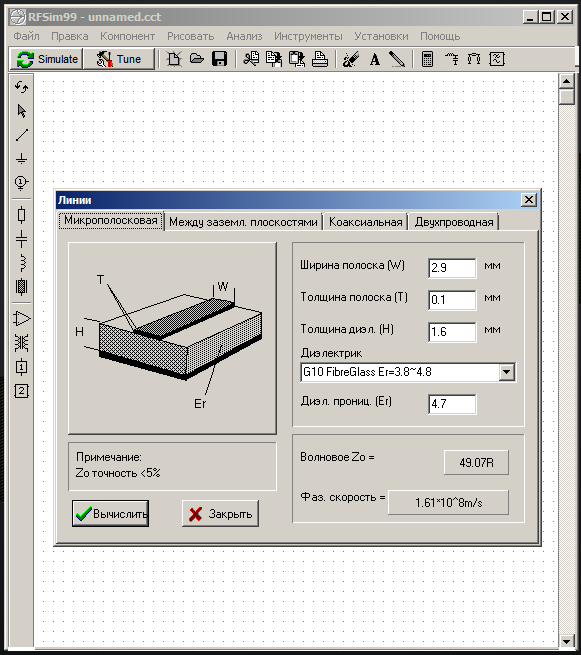
RFSim has many built-in tools that can make life easier for the developer:
• synthesis of a matching circuit, attenuator or filter;
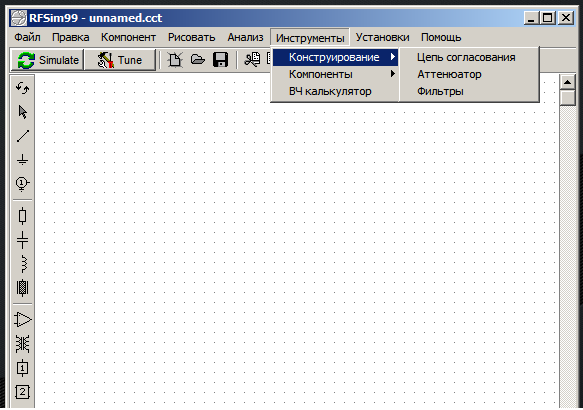
• calculation of parameters of a long line, coupler or power divider;
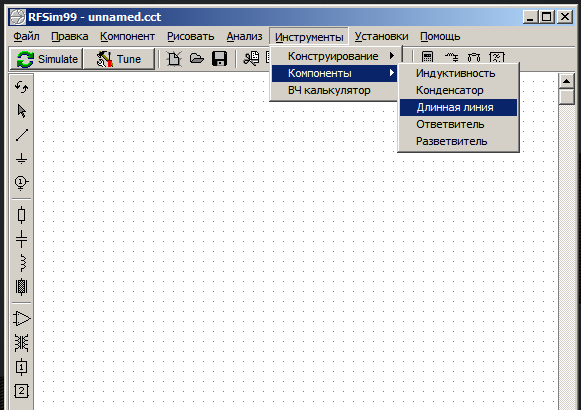
• there is also a simple calculator / converter for calculating a number of parameters / values.
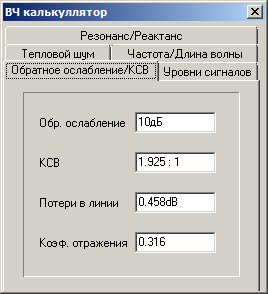
And also RFSim99 is able to calculate the schemes that the user sets. But this is a completely different story ...
PS If you have something to add, I will be very grateful for the interesting information.
AWR Utility “ TXLine ”.
There is almost nothing superfluous, only the calculation of wave resistance for conductors with different configurations. There are the following options:
• microstrip (asymmetric strip) line - microstrip;

• symmetrical strip line - stripline;

• coplanar line - CPW;

• coplanar line with an earthen layer - CPWG;

• round coaxial - round coaxial (of course, it gets out of the concept of a printed circuit board, but it will come in handy);

• slot line - slotline;

• connected microstrip lines - coupled microstrip lines;

• connected symmetrical strip lines - coupled stripline

There is also a small amount of useful information: electrical line length (converted to physical length); phase incursion per unit length of line; calculation of effective relative dielectric constant; linear losses in the line. There is a small built-in reference for some conductors and dielectrics.
Despite the fact that the utility is easy to use, you can find a training video on YouTube.
There are the most common types of lines. It would seem that this can be finished, but we will continue.
Utility “CITS25” from Polar. Contains a large number of different configurations of printed conductors and is able to satisfy a more demanding developer. I will not describe all the features of the utility, I can only say that there are configurations, for example, with front connection of conductors (in this case, you can specify the offset of the conductors relative to each other).

And there is also a symmetrical coplanar line with an offset relative to the earth layers (tires, conductors).

Another softinkoy " AppCAD " from Agilent

addition to the above configurations of conductors comprises also:
• parallel wire / wired line;

• wire above the ground plane;

• square coaxial;

• and even such an exotic configuration as “trough line” (I don’t know how to correctly translate this term into Russian).

However, in addition to calculating the wave impedance for various conductor configurations, AppCAD also has other “goodies”.
It is possible to calculate the wave resistance transformer on lumped elements.

It is possible to view up to three S-parameter files at a time. It is possible to load both two-terminal * .s1p files (for example, an antenna) and four-terminal * .s2p files (filter, amplifier, splitter, etc.). You can also see the noise characteristics of the element.

There is a built-in system calculator.

There is also a small reference with various constants.

And even this set of AppCAD functionality is not limited. There is much more interesting and useful.
And I would like to finish with the “RFSim99” softink , which the language will not turn to call a calculator. This is a small microwave CAD. At the same time, it (softinka) is free and exists in the Russian version.

RFSim has many built-in tools that can make life easier for the developer:
• synthesis of a matching circuit, attenuator or filter;

• calculation of parameters of a long line, coupler or power divider;

• there is also a simple calculator / converter for calculating a number of parameters / values.

And also RFSim99 is able to calculate the schemes that the user sets. But this is a completely different story ...
PS If you have something to add, I will be very grateful for the interesting information.
